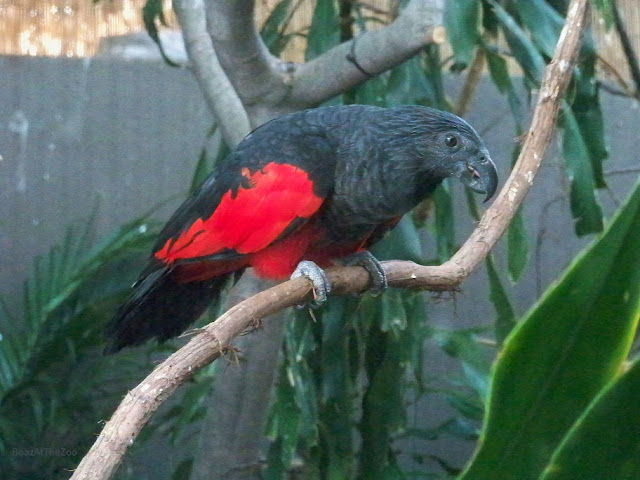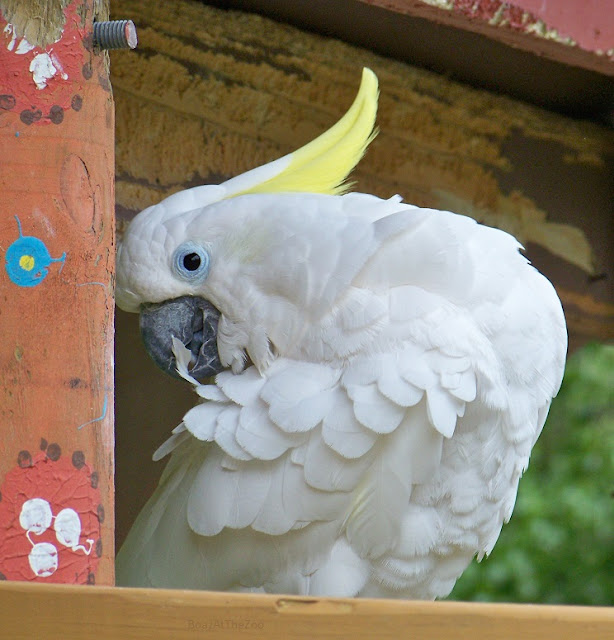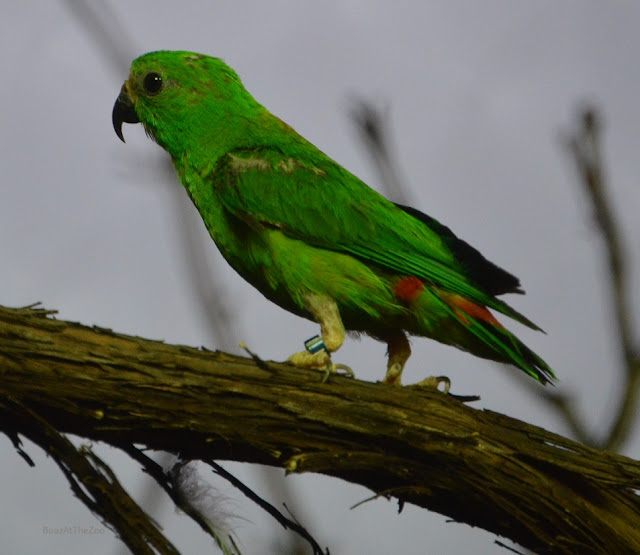I'm hesitant to manipulate my photos in software. I want to use my slowly-improving photographic skills to produce the best picture possible. I also don't have much interest in learning to use the software and I don't want to spend time running each picture I decide to keep through the software. However, software can fix some photographic mistakes.
I'm learning about my camera's "program mode" and have sometimes used it instead of automatic mode. Besides learning about program mode, I need to learn to check the camera's settings because the settings stick after turning the camera off or switching to automatic mode and back.
I finished my latest trip to the Columbus Zoo in the reptile house, and I had apparently set the white balance to fluorescent light because many of the animals live under such light. (Being able to set the white balance is one reason I use program instead of automatic mode.) My first shots of young, gray flamingos at the Toledo Zoo days later used the same leftover setting, and they came out with a blue tint. With software from Nikon I was able to easily change the white balance to daylight.
 |
| Left: Photo from camera with fluorescent white balance. Right: White balance corrected to daylight in software |
|
|
| |
Another setting I've forgotten is exposure compensation (another reason to use program mode). I don't remember why I had chosen exposure value +1, but that's what was leftover from a previous zoo visit. The value is right there in the display on top of the camera, but did I look? Nope.
The alligator below is nearly black, but the photo from the camera doesn't show that, and the tip of her tongue is washed-out. I was able to reset the exposure compensation to zero in the Nikon software and get a more accurate image.
 |
| Top: Image from camera with EV +1. Bottom: Exposure compensation corrected to EV 0 in software |
My ignorance of EV +1 continued when I left the alligators and visited the Tasmanian devils. I corrected the exposure compensation in software, but, in this case, I prefer the original image to the corrected image. In the bottom photo, the devil's body is mostly a featureless black blob while the body in the top photo shows some subtle shading.
 |
| Top: Image from camera with EV +1. Bottom: Exposure compensation set to +0 in software |
Besides remembering to check the white balance and exposure compensation settings before shooting, I need to remember to check the camera's mode the first place.

















































